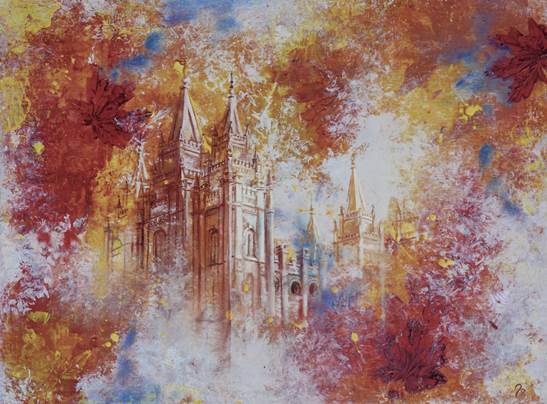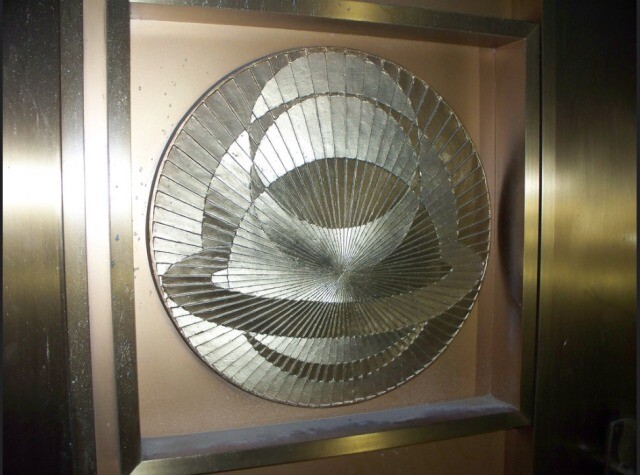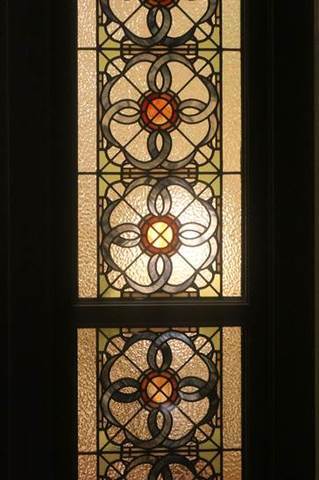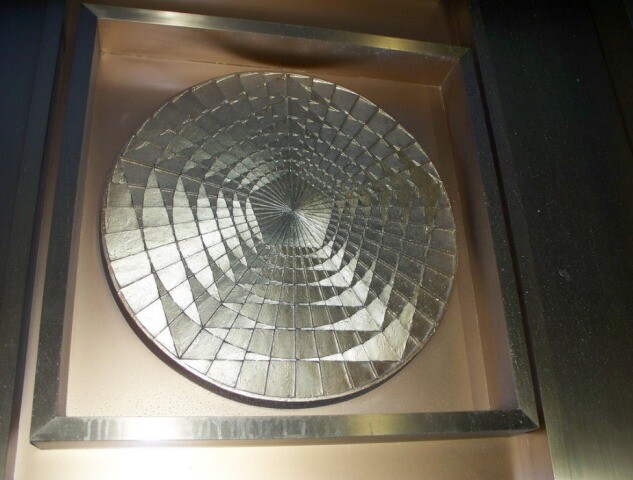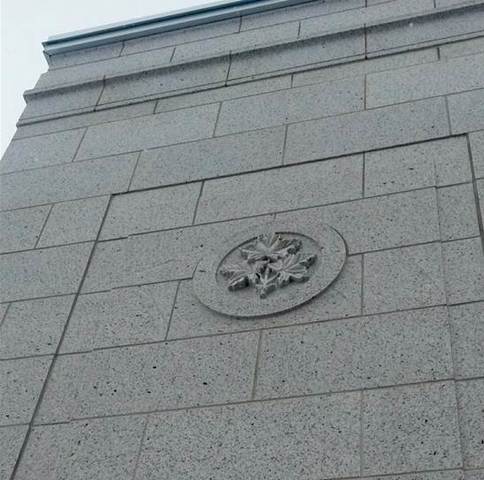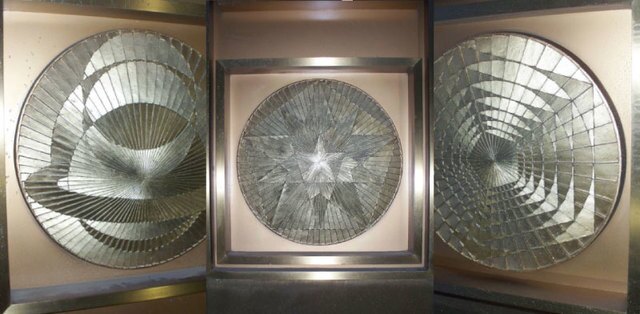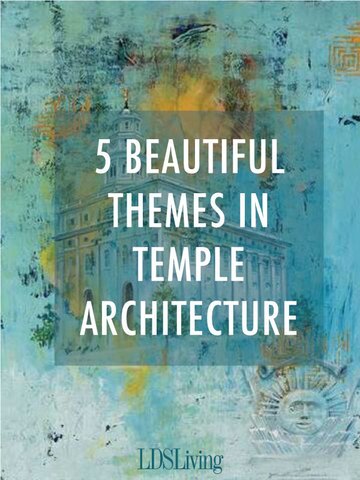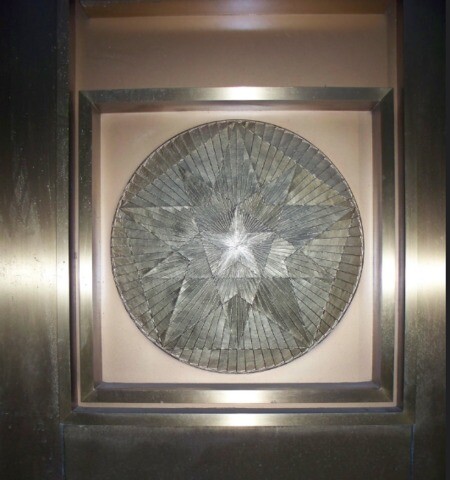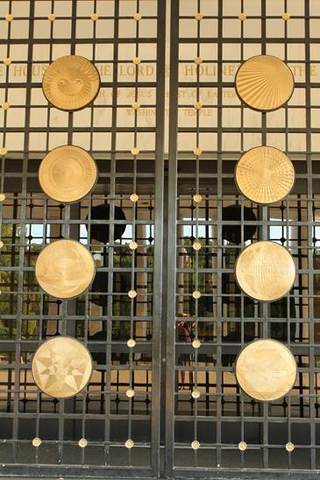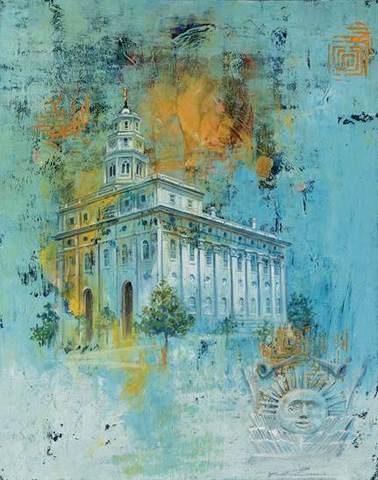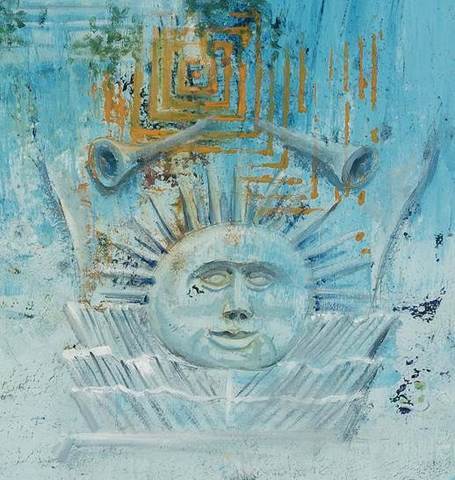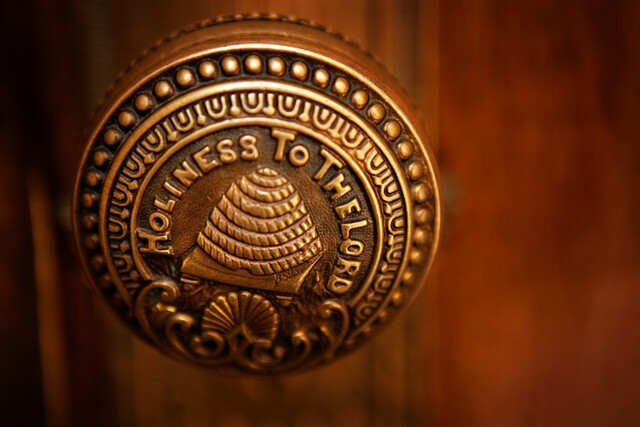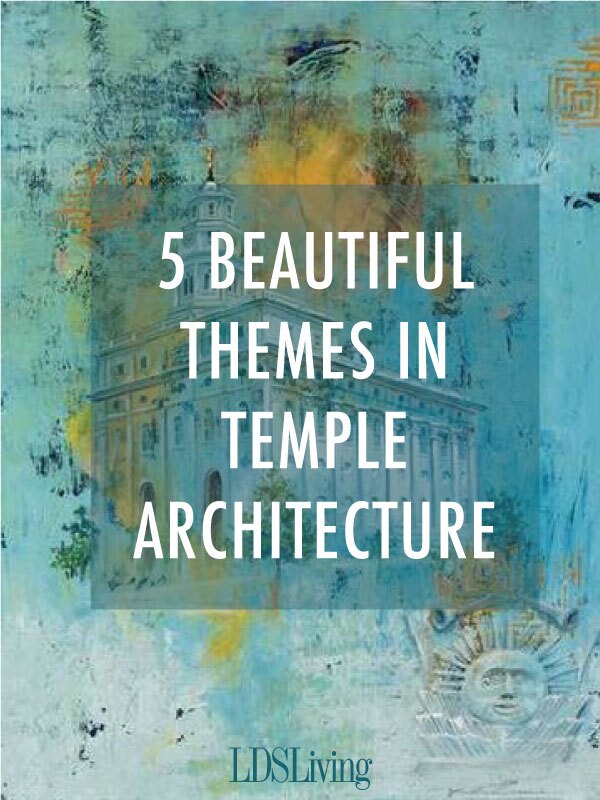
Jolynn Forman is a Latter-day Saint artist who researches the themes of different temples and incorporates those themes into her paintings. All artwork in this article is by Sister Forman.
Have you ever sat in the beautiful celestial room or sealing room in your local temple and noticed the unusual patterns in the rugs, windows, or decorative ceiling? Perhaps the patterns resembled a flower or symbol that felt familiar, but you were unsure what they meant or why they were there. Many members of the Church do not know that most temples have an architectural theme or motif that represents the area where the temple was built and/or a doctrine of the gospel. These themes could be a flower or plant that is grown in that area or a symbol of a cultural event from history or the people there. There are themes of the plan of salvation or Lehi’s dream, along with less religious designs, like the agave plant or apple blossoms. Who picks these motifs? And why are they there?
Sunstones
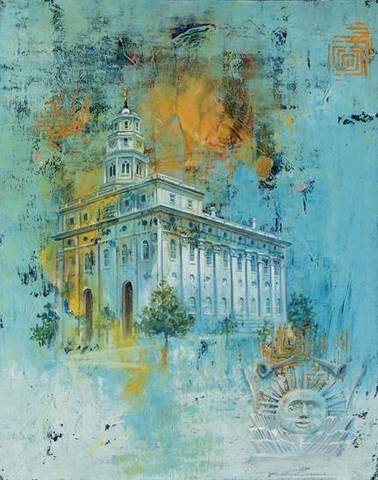
Nauvoo: Oil and cold wax, 48"x36" available for prints
One of the first temples of the Restoration to have a consistent theme was the original Nauvoo Temple of 1846. The sunstone, or trumpet stone, was featured predominately on the top of the pilasters decorating the outside of the temple.
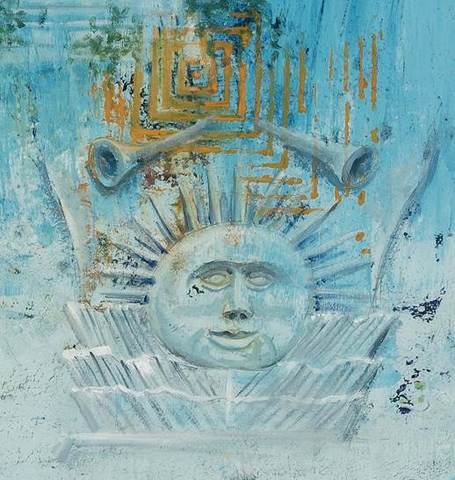
When people speak of the Nauvoo Illinois Temple, the sunstones are often mentioned. The pioneer stonecutters designed a sun with two hands above it holding trumpets. It represented the dawning of the gospel in this dispensation and the revelation of John in chapter 12 of Revelation: “[There] appeared a great wonder in heaven; a woman clothed with the sun.” There is symbolism throughout the image, from the number of sun rays to the star that is above it on the pilasters. The Salt Lake Temple and the Washington D.C. Temple also have sunstones on them that represent the same theme, although their designs differ.
The Beehive
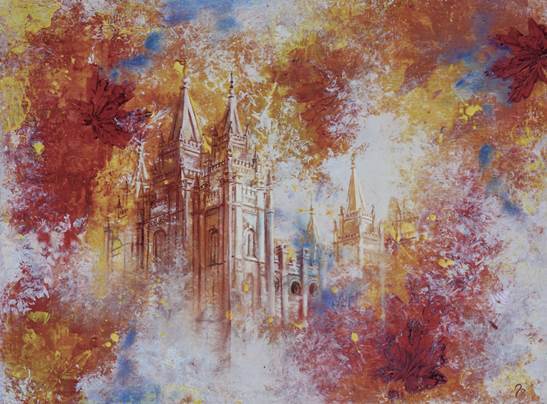
Salt Lake Autumn: Oil and cold wax, 20"x24" available for prints
Another early temple with a well-known theme is the Salt Lake Temple in Utah, which features a beehive theme. The beehive represented harmony, order, and industry of the early pioneers. It was a persistent symbol that appeared on many of the historic buildings of the time period but no more so than in the temple.
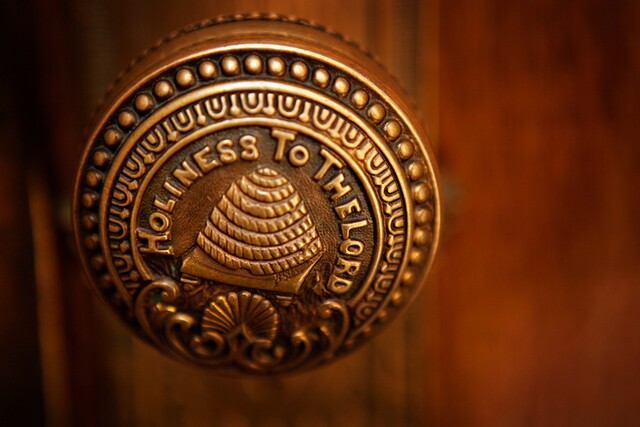
Photo from Getty Images
Walking through the temple, you will see it on doorknobs, in stone corners, and carved in the wood of the furniture. It is there to constantly remind the viewer of the sweetness of working together as a community and with God.
Stars and Shapes
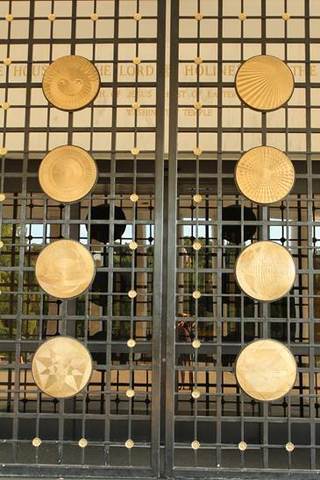
The Washington D.C. Temple has eight medallions on its ornate doors.
Modern-day themes can be simple, like the commonly seen circle in a square that represents heaven and earth coming together. Stars are a common theme in many temples, including the Salt Lake Temple, Washington D.C. Temple, Anchorage Alaska Temple, and Winter Quarters Nebraska Temple.
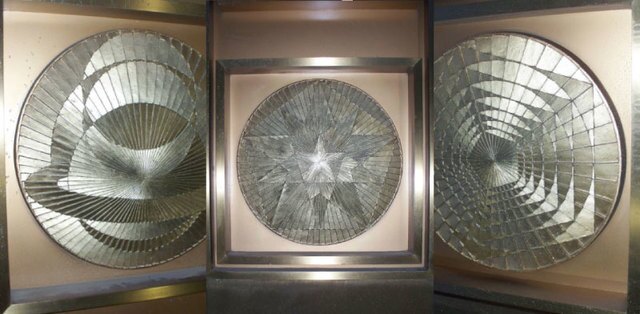
On the Washington D.C. temple doors, there is a star, a planet, concentric circles representing eternity, the sun complete with a face like the Nauvoo sunstone, the big dipper with the north star, the earth, seven concentric pentagons representing seven dispensations, and the moon. Close up pictures by David Steele.
Since the Big Dipper always points us to the North Star, temples use star symbolism to represent God’s own constancy, like the North Star, and to always direct us back to Him, like the Big Dipper. Other star themes use the Star of David, representing Christ. The San Diego California Temple has an eight-point star used over 10,000 times throughout the edifice, representative of the Melchizedek priesthood.
Flowers
Flowers are also common motifs. The Provo City Center Temple uses the Columbine flower, the Brigham City Utah Temple uses peach blossoms, and Philadelphia Pennsylvania Temple uses the mountain prairie flower.
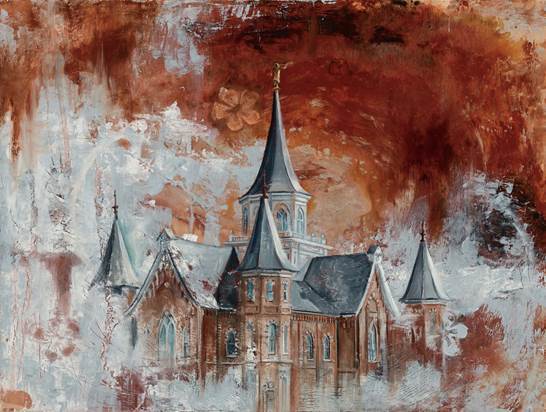
Provo City Center: Oil and cold wax, 20"x24" available for prints.
While each temple has a reason for using their specific flower, some are more ornate in design and interpretation, like the apple blossoms in the Payson Utah Temple, which change from buds to full bloom as you go higher up in the temple, much like our own progression. Other temples have more generic flowers or plants as their theme, simply representing what is commonly found growing in the area in which they are built. The Albuquerque New Mexico temple, for example, has a beautiful design of the agave plant in its stained glass windows. The Rexburg Idaho and Calgary Alberta temples use wheat throughout their designs because the temples are located in farming communities.
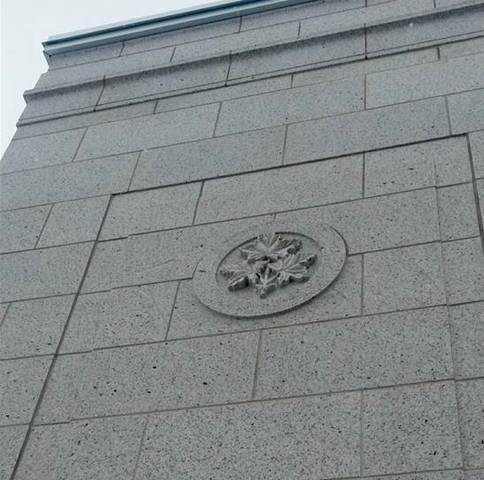
The Maple leaf is a symbol of the country of Canada. It represents unity, tolerance, and peace. The Montreal Quebec Temple picked this theme for its building both for what it represents and to portray its location.
A lot of the small temples introduced by Gordon B. Hinckley are indistinguishable in design but have state flowers in their rugs, upholstery, and other areas to help them fit in locally. For example, the Panama City Panama Temple displays the Holy Ghost orchid, their national flower, all throughout the small temple to set it apart from others, and the Fort Collings Colorado Temple uses the state flower of Colorado, the columbine.
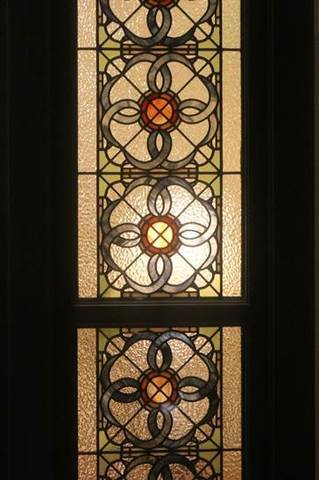
The Fort Collins Colorado Temple uses the columbine flower as its theme since it is the state flower of Colorado. It is found in the stained glass windows along with the furniture, masonry and other locations all throughout the building.
The Purpose of Temple Themes
Why do we have these themes? Church scholar Paul T. Smith theorized that by adding symbols or motifs to the temple, one can learn different layers of instruction based on one’s own understanding of the scriptures or doctrine. Smith said, “You could come from any foreign background and if you had some background in scripture or in the doctrines of the Church, then you could look upon that building and learn great things from it” (Hansen, G. E. (2009) Sacred Walls: Learning from Temple Symbols. Covenant). Like the parables of Christ, different people can look at the same symbol and get different meanings out of it that will help them understand principles for themselves. The purpose of the temple is instruction, not only through listening but also through observing visually. Smith went on to explain, “It is a great resource for people. The temple is a house of inspiration, and those symbols can help trigger inspiration.” The Church architects go to great lengths to find a theme that will uplift those who enter the temple, while also adding a local touch to distinguish that building from another temple elsewhere.
As a professional Latter-day Saint artist, I have been fascinated with temple themes for many years. I paint a unique style of temple art involving cold wax and oil paint, in which I try to create a different way of seeing the temples. I love to use color and texture along with hidden images in the painting that represents the temple, including the themes.
For example, in my Philadelphia Pennsylvania Temple painting, I placed the mountain prairie flower throughout the piece along with the colonial colors of red, navy, and creamy yellow, since those are the rug colors used to decorate the floors of the temple:
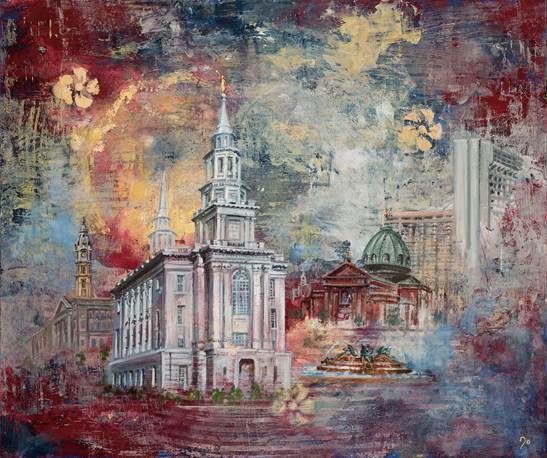
Philadelphia: Oil and cold wax, 20"x24" available for prints.
In my recent autumn Salt Lake Temple piece, I made sure the beehive was hidden somewhere in the picture. I feel these additions add to my paintings a stronger feeling of how wonderful these buildings are in both helping us learn and feel closer to God.
About the artist and author: Jolynn Forman lives in Santaquin, Utah, with her husband and four daughters, along with way too many pets. She loves to create, whether that is a really cool treehouse in the backyard or a giant toaster boat made out of cardboard (both real-life projects of hers). Her art is found in Deseret Book stores along with Zions Mercantile in Provo, Utah, and www.foursquareart.com. Her email address is jolynnforman@gmail.com. Website: www.jolynnforman.com. Follow her on Instagram @jolynnformanart.
